
September 1, 2011
These are the planned contents for this week’s boxes, but subject to change or, more likely, extras depending on what’s available as we pick and pack tomorrow.
Everyone will have:
potatoes (Burlerrow Farm, St Mabyn)
* runner beans (Mark Norman)
* carrots (Camel CSA)
* calabrese/sprouting broccoli (Camel CSA)
* tomatoes (Camel CSA)
* kohlrabi (Camel CSA)
* radish (Camel CSA)
* onions (Camel CSA)
Standard boxes will also have:
* peas (Camel CSA)
* kale (Camel CSA)
* cucumber (Camel CSA)
* = grown to organic principles
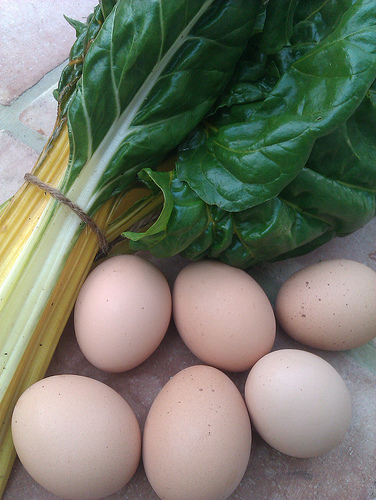
August 27, 2011
I stumbled across this way of cooking the chard in Camel CSA’s veg boxes this week in The Times. It’s from Lindsay Bareham‘s Dinner Tonight column. And very delicious it is too.
Trouchia is essentially an omelette made with chard, but it’s actually more chard than omelette. Lindsey describes it as “dense with green and just enough egg to bind it together, the spinach-meets-cabbage flavour pointed up brilliantly with garlic and a little Parmesan”.
She adds: “The outside will be lightly crusted and golden, inside will be creamy and soft. It’s more like a frittata than the usual French omelette and is delicious hot, warm or cold.”
As a matter of interest, when most cooks make la trouchia (which is unique to the Nice area of France) they add a thinly-sliced onion when stir-frying the chard.
Serves 2-4
Preparation/cooking: 40 minutes
Ingredients
500g chard
3 fresh eggs
2 tbsp freshly grated Parmesan or Gruyere
5 large garlic cloves
Olive oil
Salt and black pepper
Method
Fold over each leaf and slice off the stalk (use these for another dish). Make a pile of leaves as you go. Using a large chef’s knife, shred the leaves finely. Place in a colander, rinse, then sprinkle with 1tsp salt.
Leave for five minutes while you whisk the eggs in a bowl, seasoning lightly with salt and generously with black pepper. Add the Parmesan.
Crack the garlic, flake away the skin, chop finely then crush to a paste.
Fill a saute pan with water and boil. Rinse the chard and add to the boiling water for 10 seconds. Tip into a colander and hold under running water to cool, then squeeze dry with your hands or against the colander.
Heat 2 tbsp oil in a frying pan over a medium heat. Add the garlic and fry quickly before adding the chard. Stir-fry constantly for about 10 minutes until soft and juicy. Stir thoroughly with a fork into the egg.
Heat a small, non-stick frying pan over a high heat, add 1 tbsp oil , swirling it round the sides. Pour in the omelette mix, stirring and smoothing with a fork without touching the pan. Cook for a couple of minutes, then reduce the heat to very low, cover the pan and cook for about 8 minutes until set.
Using the lid or a plate, quickly invert the pan. Add a little more oil, increase the heat, return the omelette and cook for a couple more minutes. Slide on to a plate and enjoy.
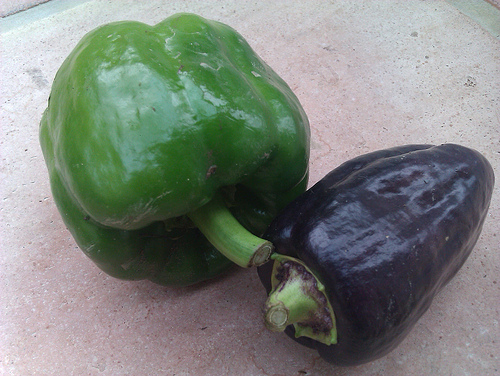
August 25, 2011
As you’ll have been finding over the last few weeks, what’s in your box doesn’t necessarily exactly match Camel CSA’s weekly list published here on the blog.
This is because we’re having to harvest and share out crops, such as peas or beans, before they go over even if they’ve not been listed. Other veg promised for the week might not be quite ready when it comes to picking them on Fridays, so we’ve left them to grow on for another week.
So, here’s this week’s proposed list with the warning that it is subject to change. You might also find the appearance of the occasional sweet pepper (green and dark purple versions), aubergine or chilli.
Rest assured, the picking/packing team will be trying to ensure that the distribution of extras is as fair as it can be. Herbs, too, will be unpredicted extras. So – enjoy the abundance while it lasts!
This week expert grower Jane Mellowship says that boxes will be ‘full to the brim’ with the bonus of early cooking apples from Charlotte’s orchard in St Mabyn. Apparently these cook to a fluff and need very little sugar. Lovely with the blackberries growing so abundantly this year in our Cornish hedges.
Everyone can be reasonably sure of getting:
potatoes (Burlerrow Farm, St Mabyn)
* Emneth Early cooking apples, aka Early Victoria (Camel CSA)
* broccoli (Camel CSA)
* spring onions (Camel CSA)
* tomatoes (Camel CSA)
* cucumber (Camel CSA)
* swiss chard (Camel CSA)
* radish (Camel CSA)
* coriander (Camel CSA)
Standard boxes will also have:
* peppers (Camel CSA)
* beetroot (Camel CSA)
* rocket (Camel CSA)
* = grown to organic principles
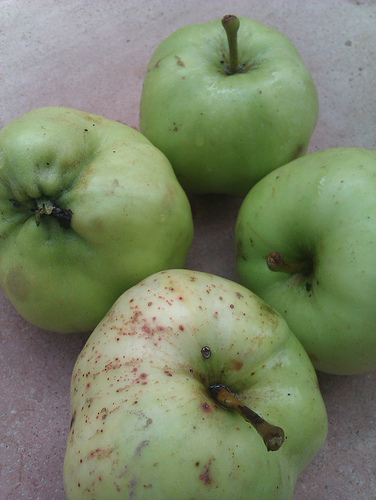
- Want to bake a Bank Holiday cake? Try our recipe from Cornwall for Westcountry apple cake
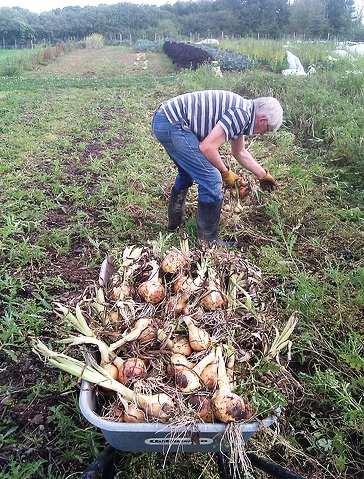
August 20, 2011
Cornwall’s mild, humid climate is proving excessively challenging for Camel CSA’s expert growers and volunteers right now.
Our large crop of onions had to be raised in a hurry as they faced a sudden threat of downy mildew. The same mildew also attacked our salad onions.
Hundreds of onions were lifted over the space of a few days and laid out to dry in our polytunnel next to the basil, coriander, cucumber and rocket beds.
Much of the back-breaking work was done by our amazing secretary Mike Sadler, who’s since been felled by a nasty bout of shingles. We wish him a hasty recovery.
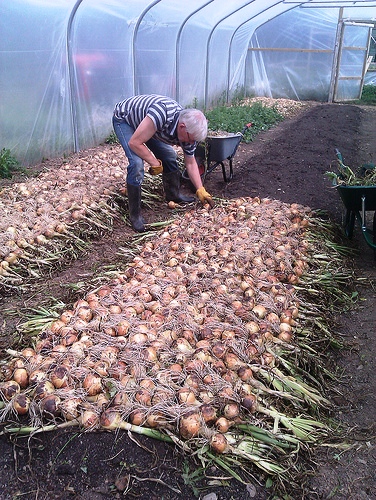
Onion lifting and storing is much more time-consuming than you might think. Luckily we were ably assisted by our bunch of regular volunteers from Hft (the Home Farm Trust) in Wadebridge, which provides support for people with learning disabilities.
At the same time our expert grower Mark Norman had to contend with an attack of blight on the tomatoes in our other polytunnel. Within minutes of spotting the first signs, he’d stripped off all the blight-stricken leaves and saved the crop from disaster.
We’re already reaping the benefits of his quick work in our weekly veg boxes – along with the glut of French beans, cucumbers, basil and podding peas.
Only lots more harvesting and the weeds to tackle from now on, we hope. The weeds are running rife in the carrot, beetroot, squash and pumpkin beds…

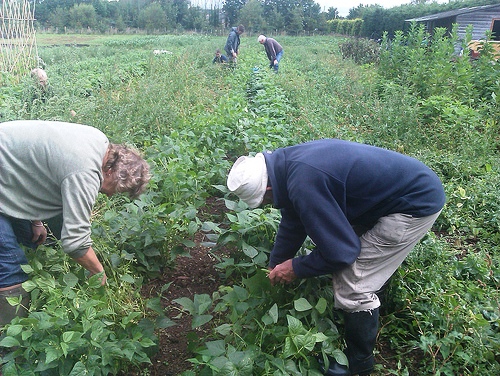
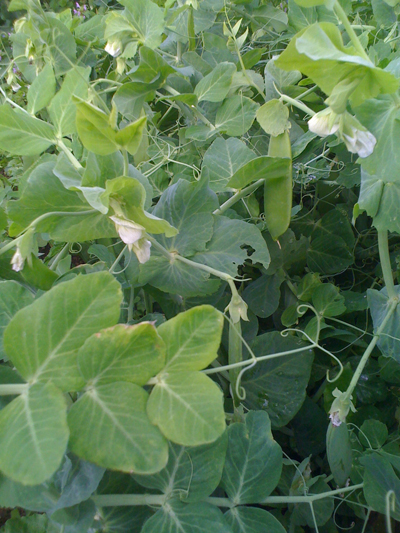
August 18, 2011
First, a plea from the packers: if you have any of those small plastic containers such as tomatoes, peaches etc are often sold in, it would be great if you could bring them in to the shed. Many thanks.
This week everyone will have:
* potatoes (St Kew Harvest)
* onions (csa)
* french beans (csa)
* kohlrabi (csa)
* tuscan kale (csa)
* sugar snap/podding peas (csa)
* spring onion (csa)
* basil (csa)
Standard boxes will also have:
* tomatoes (csa)
* cucumber (csa)
* sprouting broccoli (csa)
* = grown to organic principles

August 14, 2011
Allison Livingstone, Camel CSA’s partnership development co-ordinator says:
There’s a new face around our veg site asking questions and getting stuck in to some volunteering!
Becky Harrison is an action researcher for the University of Exeter and Volunteer Cornwall. She’s started working with us at Camel CSA to develop an understanding of how community groups work and the effect that they have on volunteers and the wider community.
Becky has an MSc in sustainable development and is now studying for a PhD. Previously she worked with the Turtle Foundation and CRISIS, the charity for single homeless people.
Becky’s particularly interested in how people feel about recording their experiences on camera and film as well as talking informally to her. She’s very friendly and is very happy to talk and work at the same time!
You can contact her directly at beckyh@volunteercornwall.org.uk with any questions or for more information.
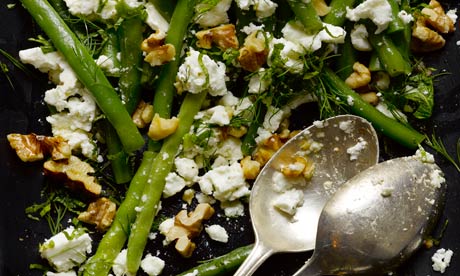
August 13, 2011
A recipe from a recent Hugh Fearnley-Whittingstall bean recipe round-up – as he says, ‘summer is a time when all of us can be full of beans’. If you’ve got more than you can cope with in your box, why not freeze some for winter use?
This simple, tasty salad works with runner beans, too.
Serves 2-4
Preparation and cooking: 20 minutes
Ingredients
280g french beans, trimmed
3 tbsp extra-virgin olive oil
juice of ½ small lemon
small handful of mint leaves, tough stalks removed, and chopped
small handful dill, tough stalks removed, half the fronds chopped, the rest reserved to garnish the dish
flaky sea salt and freshly ground black pepper
150g feta
50g walnuts, toasted and roughly chopped
Method
Top and tail the beans. Bring a pan of salted water to the boil and cook the beans until just tender, about three to six minutes, then drain and refresh in cold water. Dress the beans in the olive oil, lemon juice, mint, some of the dill, salt and pepper. Serve topped with crumbled feta cheese, walnuts and the remaining dill fronds scattered over the top.
[Photo: Colin Campbell for the Guardian]
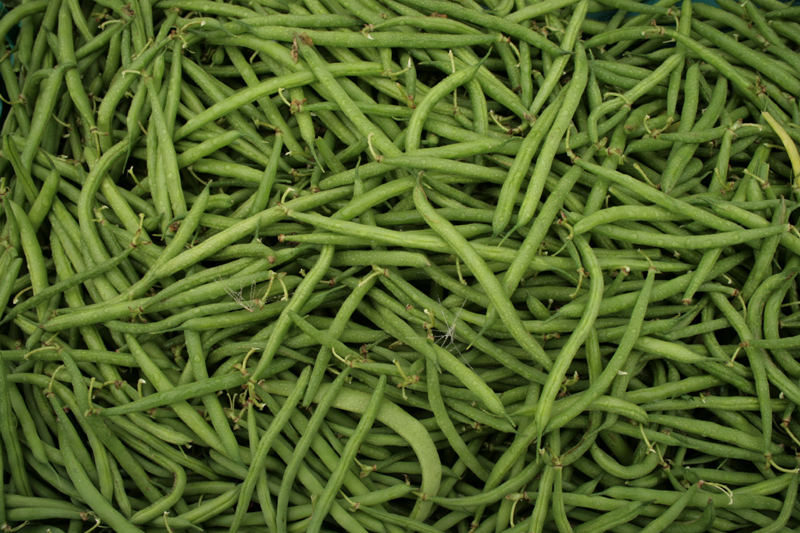
August 11, 2011
Once again, virtually everything in this week’s boxes comes from the CSA plot.
Everyone will be getting:
* french beans (Camel CSA)
* sugar snap peas (Camel CSA)
* spring onions (Camel CSA)
* swiss chard/perpetual spinach (Camel CSA)
* cucumber (Camel CSA)
* onions (Camel CSA)
* potatoes (St Kew Harvest)
Standard boxes will have the same plus:
* tomatoes (Camel CSA)
* sprouting broccoli (Camel CSA)
* kohlrabi (Camel CSA)
* = grown to organic principles

August 8, 2011
Camel CSA’s weekly veg boxes are overflowing with a bumper harvest from our community vegetable plot in north Cornwall.
We can hardly keep up with the pace of growth. The cucumbers, basil, coriander and rocket in our first new polytunnel are racing ahead.

The tomatoes in the second polytunnel, grown by the lasagne gardening method, are almost ready to harvest.
There are over 100 tomato plants in there, flanked by aubergines, sweet peppers and about 40 chilli plants.
On the field the peas are swelling by the minute, while the first of the outdoor french beans and mange tout peas will be available in the boxes this Friday.

We’ve at long last picked all the broad beans.
The brassicas are also doing brilliantly – calabrese, summer sprouting broccoli and purple kale. We’ve even managed to grow some mouth-watering kohlrabi!
Unfortunately the alternate sunshine and showery weather means it’s a good year for weeds as well –
and it’s proving difficult to keep up wth the weeding as so many of our regular volunteers are away on holiday.

Next year we’re determined instigate a strict mulching regime to enable us to manage the growth and keep them at bay.
But at least we’ve been able to start drying out our vast crop of onions.
Watch the video: How Camel CSA is helping make local food work
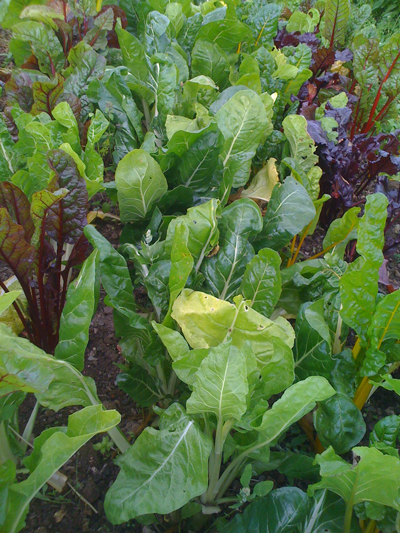
August 7, 2011
Before the recipe – which comes from Nigel Slater’s Tender – a few points about chard. After all, it grows well on the CSA’s plot so we’ll be seeing it in our veg boxes pretty often and might as well learn how to enjoy it!
- If the stems are wide, they need to be cooked separately from the leaves. Best to cut the stalk a centimetre or so below where the leaf starts. The stem is still tender at this point but will help the leaf keep its shape better during cooking. The leaves can be cooked just as you would cook spinach.
- In a gratin-type recipe, as below, the chard leaves need a good squeeze to get rid of their water.
- Yoghurt, fromage frais and mascarpone are all good as a dressing for freshly cooked chard. Add a trickle of olive oil too, and perhaps a scattering of paprika.
- Chard stalks, however thick, never take longer to boil or steam than three or four minutes.
- Seasoning your chard: anchovies – chopped and cooked to a pulp in olive oil; parsley – can calm the mineral notes of older stalks, especially if used with olive oil and lemon juice; lemon juice and a peppery olive oil – as a dressing for warm leaves and stalks.
Serves 4
Ingredients
450g chard stems and leaves
1 tbsp grain mustard
400ml double cream
a good handful of grated parmesan
Method
Cut the chard leaves from the stems. Chop the stems into short lengths and then cook briefly in boiling, lightly salted water until crisply tender. Dip the leaves in the water briefly, until they relax. Drain well and put them in a buttered shallow dish. Put the mustard in a bowl and stir in the cream and a grinding of salt and black pepper. Pour the seasoned cream over the stems and leaves, cover with grated parmesan and bake at 180C/gas 4 till the top has a light crust the colour of honey.


